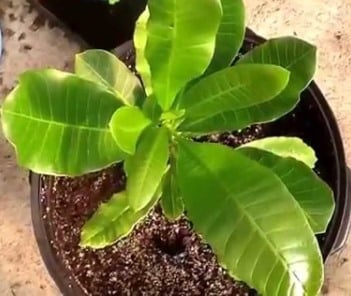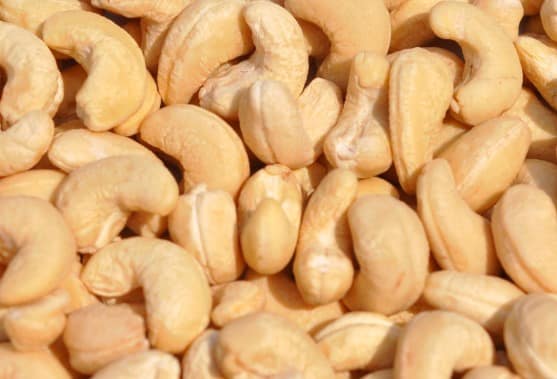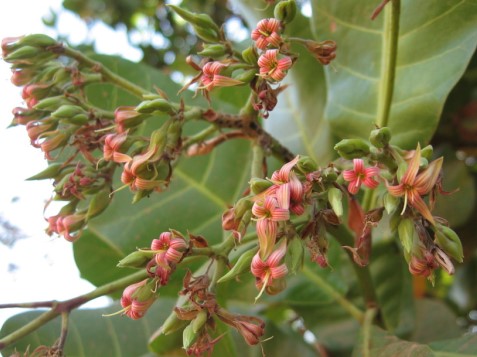Cashew Cultivation:
Introduction of Cashew Cultivation:- The cashew tree is a fast grower and tropical evergreen tree that produces the cashew nut (seed) and the cashew apple. Cashew tree is native to Brazil and currently it is being grown most of the countries around the world. Generally, cashew trees grow up to 13-14 meters. However, dwarf cultivar of cashew which reaches up to 6 m, has proved more profitable due to its early maturing habit and higher output (yields). Cashew nuts are used and consumed in different ways. Cashew nut shell being used in application from paints to lubricants. Most of the coastal areas in Asian countries are major production regions of cashew nuts. Commercial cultivation of cashew is growing day by day as cashew nut became unavoidable snack in all important social functions. Cashew nuts have very good demand in export market as well. When we say, it’s one of the fast growing trees, usually seedling trees flower in the third year after planting and fruits become matured (ripened) within two months. Proper orchard management practices and selection of high yielding cultivars can bring smile (profits) to commercial growers.
Scientific Name or Botanical Name of Cashew:- Anacardium occidentale L.
Genus of Cashew:- Anacardium.
Family Name of Cashew:- Anacardiaceae.
Cashew Names in Other Parts of World:- Cashewnoot (Dutch), Cashewnuss (German), khushny samar (Mongolian), Orzech nerkowca (Polish), Arrë shqeme (Albanian), indijskim matica (Bosnian), India pahkel (Estonian), Κάσιους (Greek), Caisiú cnó (Irish), kaesyu neoteu / 캐슈 너트 (Korean), ġewż tal-cashew (Maltese), Kaju / काजु (Nepali), Caju (Portuguese), Indijskih oraha (Serbain), Anacardo / Cajuil (Spanish), Yadki kashu (Bulgarian), 腰果仁 (Chinese), Keshew Nuwes (Filipino), Anacardio (Italian), Cashew nøtter (Norwegian), Jambu Nut (Sundanese), มะม่วงหิมพานต์ (Thai), hạt điều ( Vietnamese), Kashūnattsu / カシューナッツ (Japanese), Indijas riekstu (Latvian), Caju (Sinhalese), Piuliţa de acaju (Romanian), គ្រាប់ស្វាយចន្ទី / Kreabsvay chanti (Cambodian), kešu (Czech), Anacardier (French), kašu orev (Macedonian), Kaşulinski somunu (Turkish), cashewnöts (Swedish), akajounøddemarkedet (Danish), კეშიუ თხილის (Georgian), kesudió (Hungarian), Gajus (Malay), bâdâm hendi (Persian), 腰果 (Taiwanese), مكسرات الكاجو/al-kaashuu-mukassaraat (Arabic).

Top 10 Production Countries of Cashew:- The following are the top ten countries of cashew production in the world.
- Vietnam
- Nigeria
- India
- Côte d’Ivoire ((Ivory Coast)
- Benin
- Philippines
- Guinea
- Tanzania
- Indonesia
- Brazil.
Cashew Names in India:- Mundhiri Paruppu / Andiparippu (Tamil), Andiparippu / Kashuvandiparippu / Parangi Andi (Malayalam), Geru Beeja (Kannada), Jeedipappu (Telugu), Kaju (Hindi, Punjabi, Marathi, Gujarati, Kahmiri, Assamese, Oriya), Hijli Badam (Bengali), Cajjubi / Caaju / Moyi / Kazu (Konkani), Goanku (Tulu).
Health Benefits of Cashew:- The following are some of the health benefits of Cashew.

- Cashew Nuts may fight heart disease.
- Cashew Nuts may lower high blood pressure.
- Cashew Nuts are good for nerve health.
- Cashew Nuts may help prevent gallstones.
- Cashew Nuts may help with Weight Loss.
- Cashew Nuts are good for bone health.
- Cashew Nuts may prevent Colon, prostate and liver cancers.
- Cashew Nuts support healthy brain function.
- Cashew Nuts may lower the risk of diabetes.
- Cashew Nuts are good for skin health.
Cultivars (Varieties) of Cashew:- Well, there are many improved/hybrid varieties of cashew are available. Find out the suitable cultivar for your region from local agriculture/horticulture/forest department.
Some of the popular varieties of cashew in India are; Vengurla- 1m Vengurla- 2, Vengurla- 3, Vengurla- 4, Vengurla- 5,Vridhachalam-1,Vridhachalam-2,Chintamani-1,NRCC-1, NRCC-2, Ullal-1,Ullal-2,Ullal-3,Ullal-4,UN-50Vridhachalam-3,VRI 4,VRI (CW) H1,BPP-1, Akshaya (H-7-6),Amrutha (H-1597),Anagha (H-8-1),Anakkayam-1 (BLA-139-1),Dhana (H-1608),Dharasree (H-3-17),BPP-2,BPP-3,BPP-4,BPP-5,BPP-6,BPP-8(H2/16).
Climate Requirement for Cashew Cultivation:- Basically, Cashew is tropical crop and thrives even at high temperatures. These young plants are very sensitive to frost. Cashews can be grown up to 750 meter altitude above msl.(mean sea level). The ideal temperature for cashew farming ranges from 20°C to 35°C. The annual precipitation of 1000 – 2000 mm is ideal for its growth. Cashew needs a climate of well-defined dry season of at least 3 to 4 months to produce the best yields. Temperatures above 36°C especially between flowering and fruit set adversely affect the crop yield.
Soil Requirement for Cashew Cultivation:- Cashews can be grown in wide range of soils as it can adapt itself to varying soil conditions without impacting the yield. However, red sandy loam is best suited for cashew cultivation. Plains as well as hill slopes up to 600 to 750 feet elevation are suitable. Cashew cultivation requires deep and well drained soils rich in organic matter. Commercial producers of cashew nuts should go for soil test for finding the fertility. Any nutrient and micro-nutrient deficiencies should be supplemented in the soil. Sandy soils with pH level around 5.0 to 6.5 are required in cashew nut farming.
Propagation in Cashew Cultivation:- Self-pollination and cross-pollination are major factors in the formation of cashew seed (nut). Seedlings therefore show great variation and no “true to type” trees can be grown from the cashew seed. Therefore, soft wood grafting, air layering and epicotyl grafting are vegetative propagation methods in cashew plantation.
Season for Cashew Planting:- June to December is optimum for cultivation in South Asian region. However, having good irrigation makes this crop to be grown any time of the year.
Land Preparation and Planting in Cashew Cultivation:- The land should be ploughed thoroughly and levelled and soil trenches should be dug across the contours. Remove any dead trees, weeds and dried branches. In regular planting method, it requires around 200 plants/ha where as in high density planting, 500 (Spacing of 5 m x 4 m) plants/ha is recommended. High density plantation defiantly yields more in the same area due to greater number of plants.
When it comes to field preparation and plant space, Dig the pits size of 45 cm x 45 cm x 45 cm and fill these pits with soil mixture , 8 to 10 kg of well decomposed farm yard manure (FYM) and 1 kg of neem cake. A spacing of 7m or 8m either way is adopted.
Irrigation in Cashew Cultivation:- Generally, Cashew crop is hardy grown as rainfed crop. However, timely irrigation in any crop ensures better crop yields. Irrigation is required after planting in the field for the initial period of 1 to 2 years till their root system is established well in the soil. The other important stage for irrigation to reduce the fruit drop is flowering and fruiting.

Manures and Fertilizers in Cashew Cultivation:- Proper and timely manure and fertilizer application is important in cashew cultivation as this crop responds very well to fertilizers and manures.
Manures and NPK fertilizers (per tree) are mentioned in the below table.
| Manures and Fertilizers | First year | Second year | Third year | Fourth year | Fifth year onwards |
| FYM or compost (kg) | 10 | 20 | 20 | 30 | 50 |
| N (grams) | 75 | 145 | 215 | 285 | 500 |
| P (grams) | 45 | 85 | 125 | 165 | 200 |
| K (grams) | 65 | 125 | 175 | 245 | 300 |
Inter-crops in Cashew Cultivation:- Farmers can get extra returns with intercrops in cashew cultivation. Intercropping also increases soil fertility. This is feasible only during initial years until cashew tree canopy corners the area and shades the interspace. During rainy season, inter spaces should be thoroughly ploughed and sowed inter-crops like peanut (ground nut) or pulses or beans or minor millets or Garcinia indica (Kokum).
Training and pruning in Cashew Cultivation:- For establishing good framework of the cashew trees, it is required to train and prune the trees. Develop the trunk to a height of 1 meter by removing low lying branches. The dried and dead twigs and branches should be removed on need base.
Weed Control in Cashew Cultivation:- Weed control is one of the tasks needs to be carried out as part of orchard management practices for better growth of the cashew plants and nut yield. Make sure to carry out first weeding before the application of first dose of fertilizers and manures. Second weeding may be done after monsoon season. Mulching is another way of controlling weeds other than herbicides.
Mulching in Cashew Cultivation:- Mulching to reduce the soil erosion, moisture conservation and soil fertility. Black polythene may be used as mulch material in cashew cultivation.
Pests and Diseases in Cashew Cultivation:- Pest and disease control in cashew plantation is very important for higher yields and quality nuts.
- Pests: Stem borer, Tea mosquito bug, Shoot caterpillars, Leaf miner, and Root borer are common pests found in cashew cultivation.
- Symptoms and Control Measures: Selecting quality and disease resistant plant material will drastically reduce the inset-pest in the crop. Contact your local agriculture/horticulture department for actual symptoms ad their control measures of these pests,
- Diseases: Die back and Anthracnose are common and main diseases found in cashew cultivation.
- Symptoms and Control Measures: Selecting quality and disease resistant plant material will drastically reduce the inset-pest in the crop. Contact your local agriculture/horticulture department for actual symptoms ad their control measures of these diseases.
Note: Your local horticulture department / Agriculture department is a good source for finding suitable solutions for controlling pests and diseases in Cashew cultivation.
Harvest in Cashew Cultivation:- The cashew plants start yielding 3rd year onwards. Generally, good cashew nuts are grey green, smooth and well filled. After picking, the nuts should be separated from the apple and dried in the sun for 2 to 3 days to bring down the moisture content to 10 %. Well dried cashew nuts should be graded and packed.
Yield in Cashew Cultivation:- Well, crop yield depends on many factors like cultivar (variety), age of the tree, orchards management practices, planting method, soil type, and climatic conditions. However, on an average, one can expect a yield of 8 to 10 kg per tree. In case of hybrid cashew and high density planting, the yield would be more.
Marketing of Cashew:- Marketing plan should be in place before going to large scale or commercial productions cashew nuts. Contact local seed companies, food processing companies for bulk purchase.

dear sir
i am interested with cashew planting in my area of nepal would you mind to send me the instruction about it
altitute:- 200-350
temreture :- 18-39
Did you read the article fully? If not here is some extra information about Cashew Farming.
Where can you get the Cashew nut plant in India or Nepal? I want to use the given information to do the cashew farming.
You should inquire in good nurseries for cashew sapplings.
AM INTERESTED IN CASHEW ORCHARD IN ECUADOR FROM 100 TO 1000 ACRES, MIXED WITH MANGOES ( PRIMARILY INDIAN ALPHONSO VARIETY,IF POSSIBLE)